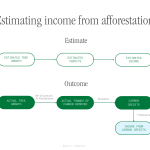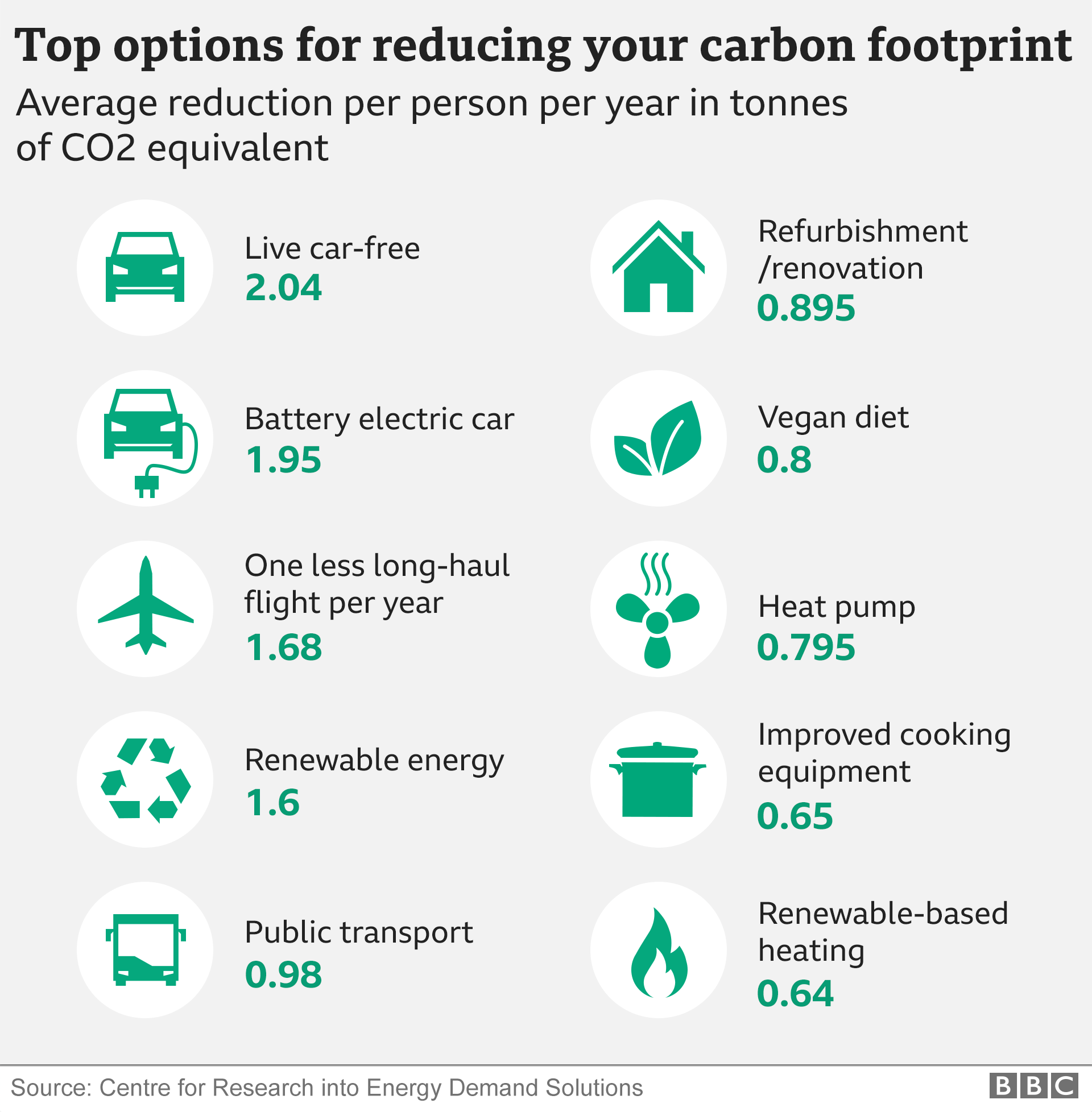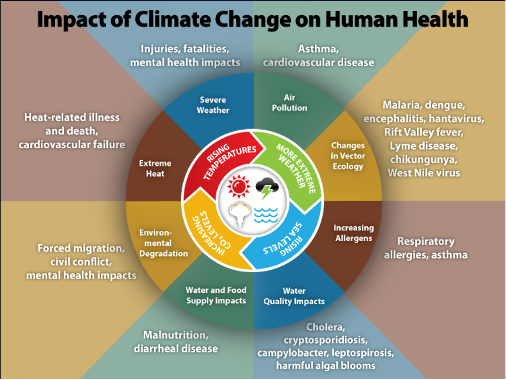In today’s rapidly changing world, the urgency to address climate change has never been greater. Organizations across industries are increasingly being held accountable for their environmental impact, with a particular focus on reducing carbon footprints. As global temperatures rise and natural resources dwindle, the question arises: does your organization truly care about sustainability? Beyond mere compliance, businesses have the power to drive meaningful change by adopting eco-friendly practices, investing in renewable energy, and fostering a culture of environmental responsibility. This article explores actionable strategies for reducing carbon emissions and examines whether organizations are stepping up to meet the demands of a greener future.

- Reducing Carbon Footprint: Does Your Organization Care?
- How does reducing your carbon footprint help the environment?
- What are the benefits of reducing carbon footprint in business?
- How health care organizations can reduce their carbon footprint?
- Why should we care about reducing our carbon footprint?
- Why is reducing our carbon footprint crucial for the environment?
- How does reducing carbon emissions benefit human health?
- What role does reducing carbon footprint play in combating climate change?
- How does reducing carbon emissions impact future generations?
- What economic benefits come from reducing our carbon footprint?
- Frequently Asked Questions (FAQ)
- What is a carbon footprint, and why should organizations care about reducing it?
- How can organizations effectively measure their carbon footprint?
- What are some practical steps organizations can take to reduce their carbon footprint?
- What are the benefits of reducing a carbon footprint for organizations?
Reducing Carbon Footprint: Does Your Organization Care?
Reducing carbon footprint has become a critical focus for organizations worldwide. As climate change continues to impact the planet, businesses are increasingly expected to take responsibility for their environmental impact. This involves adopting sustainable practices, reducing emissions, and demonstrating a genuine commitment to environmental stewardship. Below, we explore key aspects of this topic to help organizations understand and act on their carbon footprint.
1. Understanding the Importance of Carbon Footprint Reduction
Reducing carbon footprint is essential for mitigating climate change. A carbon footprint refers to the total amount of greenhouse gases, primarily carbon dioxide, emitted directly or indirectly by an organization. By reducing these emissions, organizations can contribute to slowing global warming, preserving ecosystems, and ensuring a sustainable future. Companies that prioritize this not only help the environment but also enhance their reputation and meet regulatory requirements.
See Also Carbon Project Developers, Do You Really Study the Market Before Developing a Project??
Carbon Project Developers, Do You Really Study the Market Before Developing a Project??2. Key Strategies for Reducing Carbon Emissions
Organizations can adopt various strategies to reduce their carbon footprint. These include transitioning to renewable energy sources, improving energy efficiency, and implementing waste reduction programs. Additionally, businesses can invest in carbon offset programs to neutralize their emissions. By integrating these strategies into their operations, organizations can significantly lower their environmental impact.
3. The Role of Technology in Carbon Reduction
Technology plays a pivotal role in helping organizations reduce their carbon footprint. Tools like carbon tracking software enable businesses to monitor and analyze their emissions in real-time. Furthermore, advancements in clean energy technologies, such as solar panels and wind turbines, provide sustainable alternatives to fossil fuels. Leveraging these technologies can drive meaningful progress toward carbon neutrality.
4. Employee Engagement and Corporate Culture
A successful carbon reduction strategy requires the active participation of employees. Organizations should foster a sustainability-focused corporate culture by educating staff about the importance of reducing emissions and encouraging eco-friendly practices. Initiatives like green commuting programs and energy-saving challenges can engage employees and amplify the impact of carbon reduction efforts.
See Also Insights from Nepal: My Journey in Carbon Credit Generation
Insights from Nepal: My Journey in Carbon Credit Generation5. Measuring and Reporting Carbon Footprint
Accurate measurement and transparent reporting are crucial for effective carbon footprint management. Organizations should use standardized metrics to track their emissions and publish sustainability reports to communicate their progress. This not only builds trust with stakeholders but also holds the organization accountable for its environmental commitments.
| Strategy | Description | Impact |
|---|---|---|
| Renewable Energy | Switching to solar, wind, or hydro power | Reduces reliance on fossil fuels |
| Energy Efficiency | Upgrading to energy-efficient equipment | Lowers energy consumption |
| Waste Reduction | Implementing recycling and composting programs | Minimizes landfill contributions |
| Carbon Offsetting | Investing in reforestation or clean energy projects | Neutralizes unavoidable emissions |
| Employee Engagement | Encouraging eco-friendly practices at work | Builds a culture of sustainability |
How does reducing your carbon footprint help the environment?

How Does Reducing Carbon Emissions Combat Climate Change?
Reducing your carbon footprint helps combat climate change by decreasing the amount of greenhouse gases released into the atmosphere. These gases trap heat, leading to global warming and extreme weather events. By lowering emissions, you contribute to stabilizing the Earth's climate. Key actions include:
See Also Need Help Turning Tree Planting and Treated Wastewater Use into Carbon Credits
Need Help Turning Tree Planting and Treated Wastewater Use into Carbon Credits- Using renewable energy sources like solar or wind power instead of fossil fuels.
- Reducing energy consumption through energy-efficient appliances and practices.
- Supporting policies and initiatives aimed at reducing carbon emissions on a larger scale.
How Does Reducing Carbon Footprint Improve Air Quality?
Lowering your carbon footprint directly improves air quality by reducing pollutants such as carbon dioxide (CO2), nitrogen oxides (NOx), and particulate matter. Cleaner air has significant health and environmental benefits. Steps to achieve this include:
- Opting for public transportation, cycling, or walking instead of driving.
- Switching to electric vehicles or hybrid cars to reduce tailpipe emissions.
- Advocating for stricter regulations on industrial emissions and air pollution control.
How Does Reducing Carbon Footprint Protect Ecosystems?
Reducing your carbon footprint helps protect ecosystems by mitigating the effects of climate change, such as rising temperatures and ocean acidification. These changes threaten biodiversity and disrupt natural habitats. Actions to support ecosystems include:
- Preserving forests and planting trees to absorb CO2.
- Reducing deforestation and supporting sustainable land use practices.
- Minimizing waste and pollution that harm marine and terrestrial ecosystems.
How Does Reducing Carbon Footprint Save Energy Resources?
Lowering your carbon footprint conserves energy resources by reducing dependence on non-renewable energy sources like coal, oil, and natural gas. This ensures a more sustainable future. Effective strategies include:
- Investing in energy-efficient technologies for homes and businesses.
- Adopting solar panels or other renewable energy systems.
- Practicing energy conservation by turning off unused appliances and optimizing heating and cooling systems.
How Does Reducing Carbon Footprint Promote Sustainable Living?
Reducing your carbon footprint encourages sustainable living by fostering habits that minimize environmental impact and promote long-term ecological balance. This includes:
- Choosing locally sourced and seasonal foods to reduce transportation emissions.
- Reducing, reusing, and recycling materials to minimize waste production.
- Supporting businesses and products that prioritize sustainability and eco-friendly practices.
What are the benefits of reducing carbon footprint in business?

Cost Savings Through Energy Efficiency
Reducing a business's carbon footprint often involves implementing energy-efficient practices, which can lead to significant cost savings. By optimizing energy use, companies can reduce utility bills and operational expenses. For example:
- Switching to LED lighting or energy-efficient appliances lowers electricity consumption.
- Investing in renewable energy sources, such as solar panels, reduces reliance on fossil fuels.
- Implementing smart energy management systems helps monitor and control energy usage effectively.
Enhanced Brand Reputation and Customer Loyalty
Consumers today are increasingly drawn to businesses that prioritize sustainability. By reducing their carbon footprint, companies can improve their brand image and attract eco-conscious customers. Key benefits include:
- Building a reputation as an environmentally responsible organization.
- Gaining a competitive edge in markets where sustainability is a priority.
- Fostering customer loyalty by aligning with their values and expectations.
Compliance with Regulations and Avoiding Penalties
Many governments and regulatory bodies are introducing stricter environmental regulations to combat climate change. Reducing carbon emissions ensures compliance and helps businesses avoid fines or penalties. This includes:
- Meeting emission reduction targets set by local or international authorities.
- Staying ahead of potential carbon taxes or cap-and-trade systems.
- Preparing for future regulations by adopting sustainable practices early.
Attracting Investors and Securing Funding
Investors are increasingly prioritizing environmental, social, and governance (ESG) criteria when making decisions. Businesses that reduce their carbon footprint are more likely to attract investment and secure funding. Benefits include:
- Demonstrating a commitment to long-term sustainability and risk management.
- Accessing green financing options, such as sustainability-linked loans.
- Appealing to impact investors who focus on positive environmental outcomes.
Boosting Employee Morale and Retention
Employees are more likely to feel proud and motivated working for a company that prioritizes sustainability. Reducing carbon emissions can enhance workplace culture and improve retention rates. Key advantages include:
- Creating a sense of purpose by contributing to environmental goals.
- Attracting top talent who value working for eco-friendly organizations.
- Improving overall job satisfaction through green initiatives and practices.
How health care organizations can reduce their carbon footprint?

1. Implementing Energy-Efficient Practices
Health care organizations can significantly reduce their carbon footprint by adopting energy-efficient practices. This includes upgrading to LED lighting, installing smart thermostats, and using energy-efficient medical equipment. Additionally, hospitals can invest in renewable energy sources such as solar panels or wind turbines to power their facilities. Regular maintenance of HVAC systems and ensuring proper insulation can also contribute to energy savings.
- Upgrade to LED lighting to reduce electricity consumption.
- Install smart thermostats to optimize heating and cooling.
- Use energy-efficient medical equipment to lower energy usage.
- Invest in renewable energy sources like solar or wind power.
- Conduct regular maintenance of HVAC systems and improve insulation.
2. Reducing Waste and Enhancing Recycling Programs
Health care facilities generate a significant amount of waste, much of which can be reduced or recycled. Implementing waste segregation systems and recycling programs can help minimize the environmental impact. Organizations should also consider reusable medical supplies and biodegradable materials to reduce landfill waste. Proper disposal of hazardous materials is equally important to prevent environmental contamination.
- Implement waste segregation systems to separate recyclable materials.
- Develop comprehensive recycling programs for paper, plastics, and metals.
- Use reusable medical supplies to reduce single-use waste.
- Opt for biodegradable materials in packaging and supplies.
- Ensure proper disposal of hazardous materials to prevent pollution.
3. Optimizing Transportation and Logistics
Transportation is a major contributor to carbon emissions in health care organizations. Optimizing logistics and supply chains can help reduce the carbon footprint. This includes using electric or hybrid vehicles for transportation, consolidating shipments to minimize trips, and encouraging telemedicine to reduce patient travel. Additionally, organizations can partner with eco-friendly suppliers to ensure sustainable practices throughout the supply chain.
- Use electric or hybrid vehicles for transportation needs.
- Consolidate shipments to reduce the number of trips.
- Promote telemedicine to decrease patient travel.
- Collaborate with eco-friendly suppliers for sustainable sourcing.
- Optimize delivery routes to minimize fuel consumption.
4. Adopting Sustainable Building Designs
Health care facilities can reduce their carbon footprint by adopting sustainable building designs. This includes constructing or retrofitting buildings to meet LEED (Leadership in Energy and Environmental Design) standards. Features such as green roofs, natural lighting, and water-efficient systems can significantly reduce energy and water consumption. Additionally, using sustainable construction materials can further minimize environmental impact.
- Design or retrofit buildings to meet LEED standards.
- Incorporate green roofs to improve insulation and reduce heat.
- Maximize natural lighting to reduce electricity usage.
- Install water-efficient systems to conserve water.
- Use sustainable construction materials for new projects.
5. Promoting Sustainable Practices Among Staff and Patients
Engaging staff and patients in sustainable practices is crucial for reducing the carbon footprint of health care organizations. This can be achieved through education and awareness programs that encourage energy conservation, waste reduction, and sustainable commuting options. Providing incentives for staff who adopt eco-friendly habits and involving patients in green initiatives can also foster a culture of sustainability.
- Conduct education and awareness programs on sustainability.
- Encourage staff to adopt eco-friendly habits like carpooling or biking.
- Provide incentives for employees who participate in green initiatives.
- Involve patients in sustainability programs and recycling efforts.
- Promote the use of digital records to reduce paper waste.
Why should we care about reducing our carbon footprint?

Why is reducing our carbon footprint crucial for the environment?
Reducing our carbon footprint is essential for the environment because it directly impacts the health of our planet. Excessive carbon emissions contribute to climate change, which leads to severe consequences such as rising global temperatures, melting ice caps, and extreme weather events. By minimizing our carbon footprint, we can help mitigate these effects and protect ecosystems. Key reasons include:
- Preserving biodiversity: Lower carbon emissions reduce habitat destruction and protect endangered species.
- Improving air quality: Reducing emissions decreases air pollution, which benefits human and animal health.
- Slowing global warming: Lowering greenhouse gas emissions helps stabilize the Earth's climate.
How does reducing carbon emissions benefit human health?
Reducing carbon emissions has a direct positive impact on human health. Air pollution, largely caused by burning fossil fuels, is linked to respiratory and cardiovascular diseases. By lowering emissions, we can improve air quality and reduce health risks. Important benefits include:
- Reduced respiratory illnesses: Cleaner air decreases cases of asthma and other lung conditions.
- Lower healthcare costs: Fewer pollution-related illnesses mean reduced medical expenses.
- Enhanced quality of life: Better air quality leads to improved overall well-being.
What role does reducing carbon footprint play in combating climate change?
Reducing our carbon footprint is a critical step in combating climate change. Greenhouse gases, such as carbon dioxide, trap heat in the atmosphere, leading to global warming. By cutting emissions, we can slow down this process. Key actions include:
- Transitioning to renewable energy: Solar, wind, and hydropower reduce reliance on fossil fuels.
- Promoting energy efficiency: Using less energy in homes, transportation, and industries lowers emissions.
- Supporting sustainable practices: Recycling, reforestation, and sustainable agriculture help absorb carbon dioxide.
How does reducing carbon emissions impact future generations?
Reducing carbon emissions today ensures a healthier and more sustainable planet for future generations. If we fail to act, the consequences of climate change will become more severe, leaving future populations to face irreversible damage. Key considerations include:
- Ensuring resource availability: Reducing emissions helps preserve natural resources like water and forests.
- Preventing extreme weather events: Lower emissions reduce the likelihood of hurricanes, droughts, and floods.
- Securing economic stability: A stable climate supports agriculture, infrastructure, and economies.
What economic benefits come from reducing our carbon footprint?
Reducing our carbon footprint offers significant economic advantages. Transitioning to a low-carbon economy creates jobs, reduces energy costs, and fosters innovation. Key economic benefits include:
- Job creation: Renewable energy sectors provide employment opportunities.
- Energy savings: Energy-efficient technologies lower utility bills for households and businesses.
- Market growth: Green technologies and sustainable products open new markets and drive economic growth.
Frequently Asked Questions (FAQ)
What is a carbon footprint, and why should organizations care about reducing it?
A carbon footprint refers to the total amount of greenhouse gases, primarily carbon dioxide, emitted directly or indirectly by an individual, organization, or product. Organizations should care about reducing their carbon footprint because it directly impacts climate change. By lowering emissions, businesses can contribute to a healthier planet, meet regulatory requirements, and appeal to environmentally conscious consumers. Additionally, reducing emissions often leads to cost savings through energy efficiency and sustainable practices.
How can organizations effectively measure their carbon footprint?
Organizations can measure their carbon footprint by conducting a carbon audit. This involves tracking emissions from all activities, including energy use, transportation, waste production, and supply chain operations. Tools like carbon calculators and software platforms can help quantify emissions. Partnering with third-party experts or using frameworks like the Greenhouse Gas Protocol ensures accuracy and compliance with international standards. Accurate measurement is the first step toward setting realistic reduction goals.
What are some practical steps organizations can take to reduce their carbon footprint?
Organizations can adopt several strategies to reduce their carbon footprint. These include transitioning to renewable energy sources, improving energy efficiency in buildings, and optimizing transportation logistics. Implementing waste reduction and recycling programs, as well as sourcing materials sustainably, also make a significant impact. Encouraging remote work and reducing business travel can further lower emissions. Additionally, organizations can invest in carbon offset programs to neutralize unavoidable emissions.
What are the benefits of reducing a carbon footprint for organizations?
Reducing a carbon footprint offers numerous benefits for organizations. It enhances corporate reputation by demonstrating a commitment to sustainability, which can attract customers, investors, and top talent. It also ensures compliance with environmental regulations and reduces the risk of penalties. Financially, organizations can save money through energy efficiency and waste reduction. Moreover, taking proactive steps to address climate change positions businesses as leaders in their industry, fostering long-term resilience and success.
Leave a Reply


Our Recommended Articles